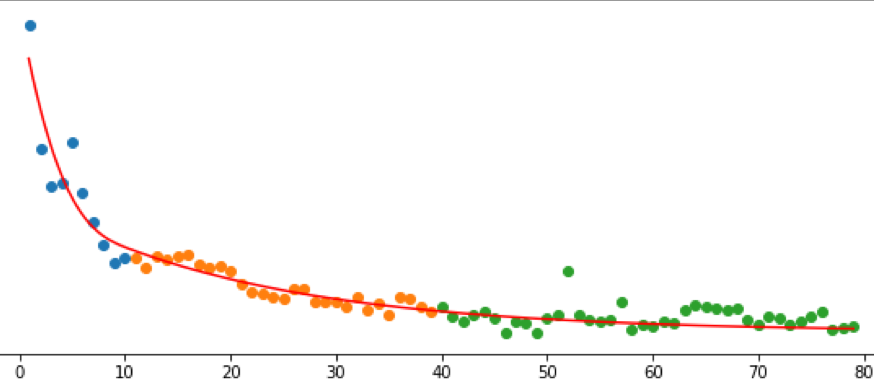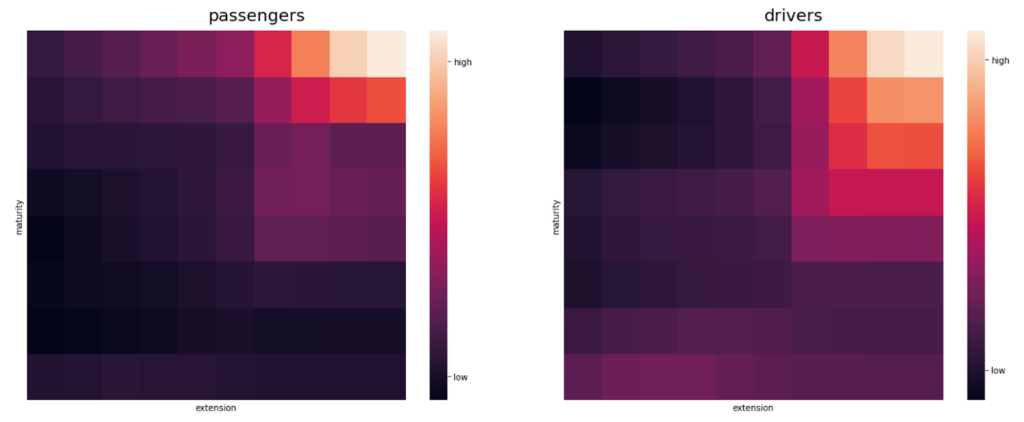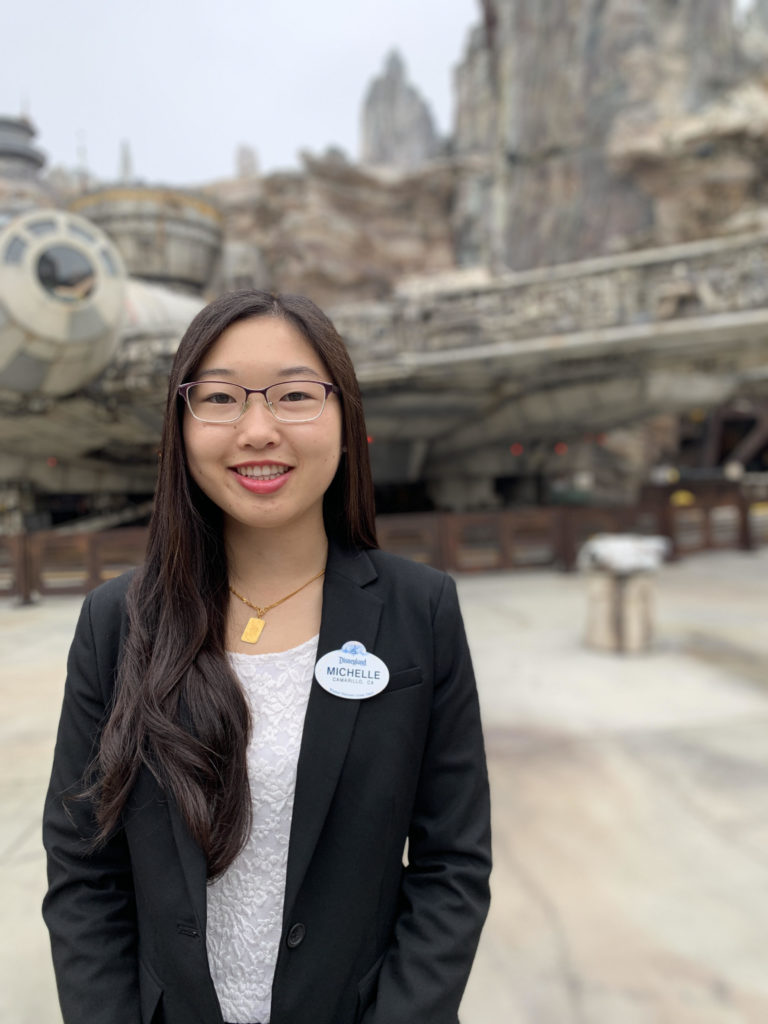IEOR Student Summer Experiences
What were IEOR students up to this summer? We asked our undergraduate and Ph.D. students to share their summer experiences, whether it was in research or industry to show the breadth of opportunities for IEOR students.
Emily Garcia (B.S. ’20)
Undergraduate Research Fellow at Purdue University
Over the summer, as a Purdue Summer Undergraduate Research Fellow (SURF), I worked with Dr. Paul Griffin, Dr. Ping Huang, Dr. Zachary Hass and Dr. Yuehwern Yih at the Regrenstrief Center for Healthcare Engineering to determine the risk factors associated with potentially avoidable hospital re-admissions for long-term care.
According to a long-term care scorecard measure performed by the AARP, Indiana currently ranks as the worst state to provide long-term care, however re-hospitalizations, especially those under 30-days, are a nationwide problem accounting for over a trillion dollars of expenditures for Medicare and Medicaid.
Using the Centers for Medicaid and Medicare Indiana Minimum Data Set Version 3.0, which contained over 2 million patient assessments, I analyzed a list of compiled candidate risk factors using statistical analysis and programming. I identified 31 key risk factors that included medications, patient characteristics, health and mental health conditions that influence the probability of a patient experiencing a hospital re-admission within 30-days. In addition, I built a prediction risk model to help identify patients at risk of a re-hospitalization. Thanks to the support of my team, I have been selected to present at the INFORMS Annual Meeting 2019.



Emily presenting her reearch 
Images source, Purdue Engineering
Michelle Liu (B.S. ’20)
IE Intern @ The Walt Disney Company
As an IE intern for The Walt Disney Company this summer, I got to work on many projects for Disneyland Resort revolving around guest arrival, merchandise, attractions/entertainment, and food & beverage. One of the most exciting parts of my experience was getting to be a part of the opening team for Star Wars: Galaxy’s Edge. My first project was on Savi’s workshop (the lightsaber-building experience at Star Wars Land) and it was focused on finding ways to reduce the show and replenishment cycle times without compromising the guest experience. I ended up making difference recommendations with the way cast members were handling replenishment and interacting with guests during the build process to minimize show time and allow the Park to schedule more of the high-demand shows each day.
Some of my other favorite projects were a Mickey’s House Operational Efficiency Study and a Disneyland Drop-Off/Pick-Up Area Utilization Study. The Mickey’s House project looked at how to streamline the ToonTown Mickey meet-and-greet process, and the Disneyland Drop-Off study was looking at how to avoid/alleviate the extreme vehicle congestion that takes place in the area during peak arrival and departure times. It was really cool to get to present my findings to GMs of the resort and see the impact of my work on guests right before my eyes. I got to learn so much from my coach, coworkers, managers, and other Cast Members there and had a really fun time with the other interns! The best part was definitely seeing how much happiness and excitement Guests received from the magical experiences that my team worked on enhancing! 🙂
Ryan McCormick (B.S. ’21)
Operations & Data Science Intern @ PRESS London
I interned for a nutrition company called Press in London. I did supply chain and logistics for them — I got the opportunity to bounce between the main office and the warehouse, and analyzed data to better forecast demand and increase warehouse efficiency.

Justin Gerwien (B.S. ’21)
Operations Summer Intern at HARMAN International
This summer, I interned in the operations department at Harman International, a consumer electronics company which designs and manufactures JBL, Harman/Kardon, AKG, and multiple other brands of speakers, headphones, and audio equipment and peripherals. I worked for six weeks in the logistics team which focuses on getting products from China to the US, then distributing those products around the country. I participated in the ocean carrier selection process and helped develop a plan for improving warehousing practices. The last 6 weeks I worked in the sales and order processing team which focuses on forecasting demand and ensuring that supply meets that demand. I created daily supply reports of Harman’s best-selling products and spent considerable time in SAP helping the team decide whether or not to expedite a product shipment through air or truck diversion.
I worked on two larger projects over the course of the internship. The first was a group project in which me and several other Harman interns developed a business proposal to help Harman attract and retain young talent in the currently tight and competitive labor market. Out of ten teams of interns, our team placed third for our proposal which advocated more modern workspaces, improved employee benefits and perks, greater flexibility, a superior applicant portal, and more diverse university recruitment and sponsorship. The second project was my personal project in which I investigated the physical and financial feasibility of tracking Harman’s products through the entire supply chain from the production plants in China to Harman’s customers around the world. I researched different tracking systems, wrote and presented a business proposal to my managers, and worked with a GPS tracker manufacturer to set up a live demonstration of their GPS trackers and tracking portal for Harman. While I wasn’t able to see the GPS trackers fully implemented into Harman’s supply chain, I helped get the ball rolling towards improving Harman’s understanding and visibility of their supply chain.

Arman Jabbari (Ph.D. candidate)
Research Scientist at Lyft
At Lyft, like many other companies, we need to make accurate short and long-term forecasts. Some of the metrics that we need to accurately predict are the number of driver hours provided by drivers in different regions — i.e the supply side of the business — and also the number of rides taken by riders in different regions, i.e. the demand.
I have developed and productized a tool/method that is used to make long-term forecasts of up to 52 weeks.
To learn more about it, check out this blog post in which I’ve briefly explained how the cohort-based model works:
https://eng.lyft.com/making-long-term-forecasts-at-lyft-fac475b3ba52




Xu Rao (Ph.D. candidate)
Quantitative Finance Summer Associate at Morgan Stanley
I did an internship in Morgan Stanley as a Quantitative Finance Summer Associate in New York City. I worked with the credit complex modeling team in fixed income division. My intern project in to conduct empirical research on TRACE data set (trade records for corporate bond) to analyze returns and market micro-structure.
It’s nice to have the chance to work on real-world data set, and to talk with people working in different team. I learnt lots of new things about finance, the market, and how trading is done in the bank. Besides, New York is super fun. There are so many things to explore, especially in the summer.

Georgios Patsakis (Ph.D. candidate)
Research Scientist at Amazon
I spent my summer working as a Research Scientist for the Middle Mile Planning, Routing and Optimization Science (MMPROS) team at Amazon, in Palo Alto. The whole internship was a very fulfilling and creative experience. The team has many interesting problems that can be directly addressed using Operations Research, with the main concern being scalability. My main project was focused on optimizing cross-border transportation. I got the chance to devise and implement algorithmic solutions that involved decomposition methods, heuristics, stronger formulations for mixed integer programs, as well as enrich my technical skills by diving in more depth on the use and implementation of specialized optimization software.
The team I joined was very welcoming and consisted exclusively of kind, interesting, and talented people. The managers were very supportive, and clearly defined the goals of each project. Through common activities (dinners, hikes), the team came even closer together. Traveling to other Amazon facilities and offices, and meeting people who are working on different branches of the company, was also an exciting part of the job. Overall, I would definitely recommend this experience to people who want to see their expertise used in real world applications, while still retaining the element of research.





